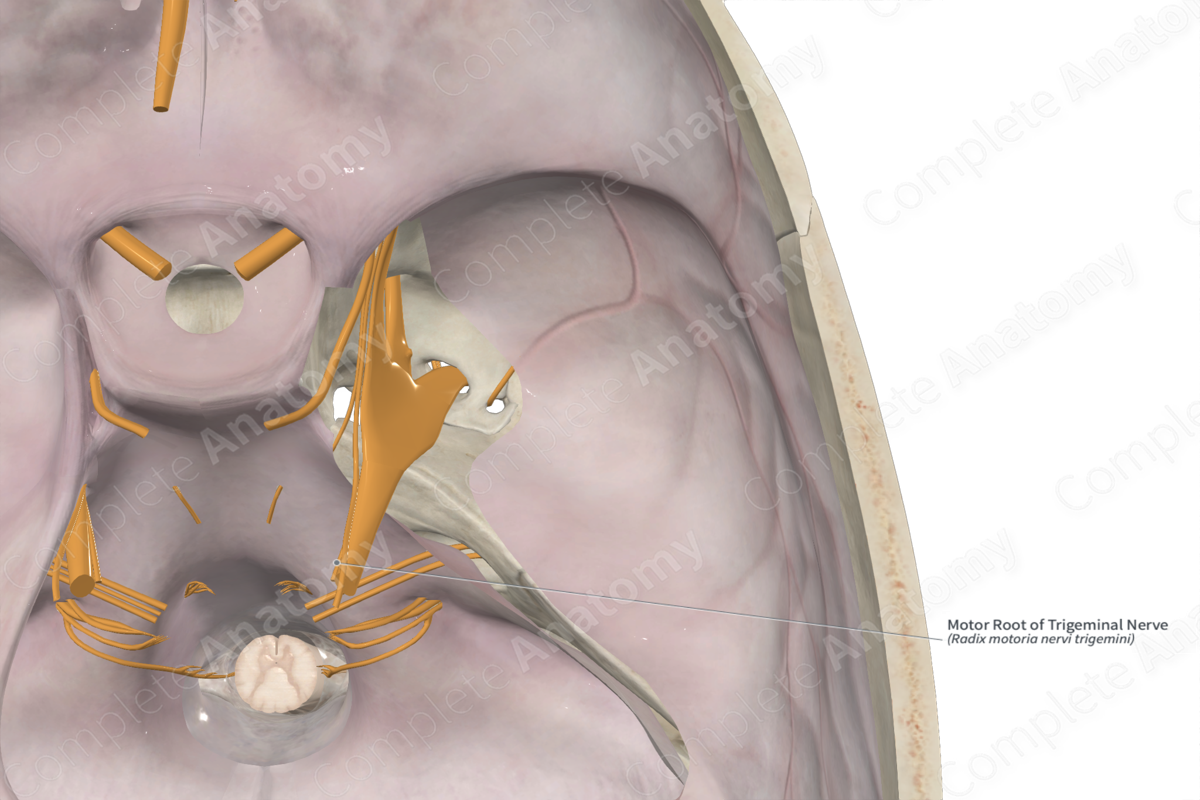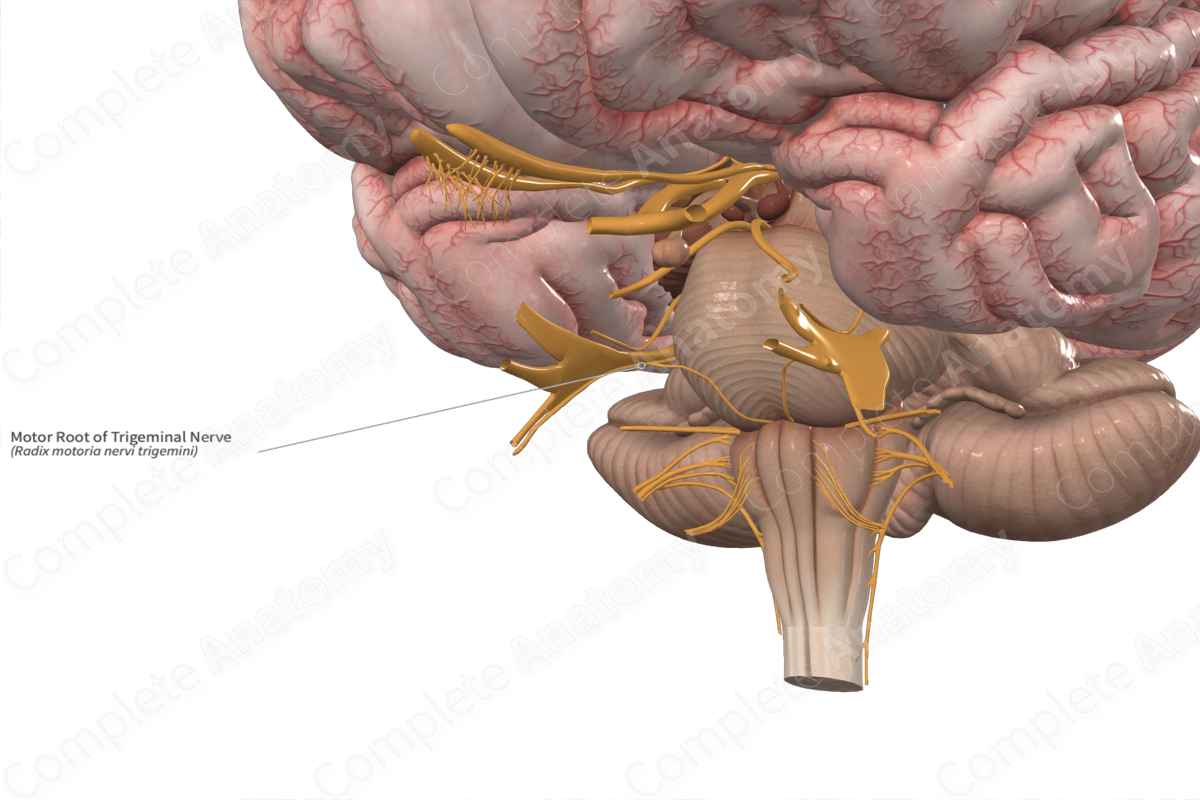
Quick Facts
Origin: Pons.
Course: Runs anterolaterally from the pons over the anterior part of the petrous ridge of the temporal bone to trigeminal cave where the trigeminal ganglion is located.
Branches: Mandibular nerves (V3).
Supply: Motor innervation to the muscles of mastication, tensor tympani, tensor veli palatini, mylohyoid, and anterior digastric muscles.
Related parts of the anatomy
Origin
The motor root of the trigeminal nerve originates from the motor nucleus of the trigeminal nerve. The fibers emerge from the lateral surface of the pons, roughly where the middle cerebellar peduncle enters the brainstem.
Course
The motor root of trigeminal nerve accompanies the sensory root. It exits the pons laterally in the body of the middle cerebellar peduncle. From here, it runs anteriorly and laterally, crossing over the anterior portion of the petrous ridge of the temporal bone. Just after crossing over, and near the foramen lacerum, the motor root of the trigeminal nerve runs on the deep surface of the trigeminal ganglion, along the floor of the trigeminal cave, and joins the mandibular nerve.
Branches
The motor root of the trigeminal nerve only supplies motor fibers to the mandibular nerve.
Supplied Structures
The motor root of trigeminal nerve conveys branchial motor innervation to the muscles of mastication, tensor tympani, tensor veli palatini, mylohyoid, and anterior digastric muscles.
Learn more about this topic from other Elsevier products
Trigeminal Nerve

The trigeminal nerve is the fifth cranial nerve that exits the brainstem at the level of the pons as a single nerve root, passes through the trigeminal ganglion, and continues distally from the ganglion as separate nerve branches.



